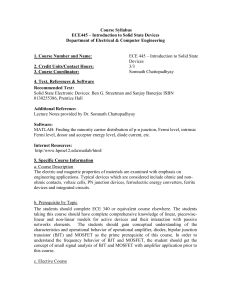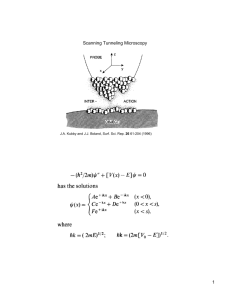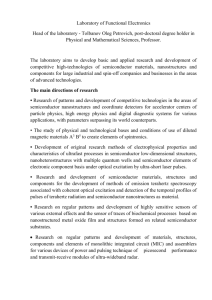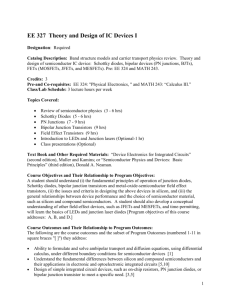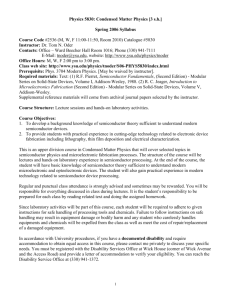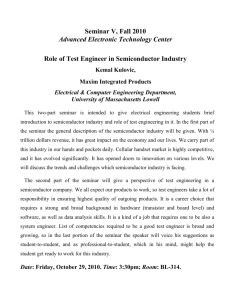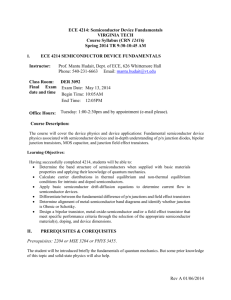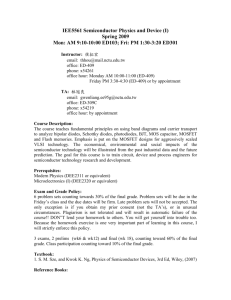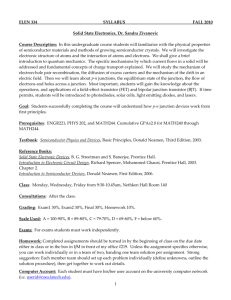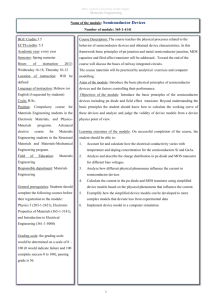ECE 545 ()
advertisement
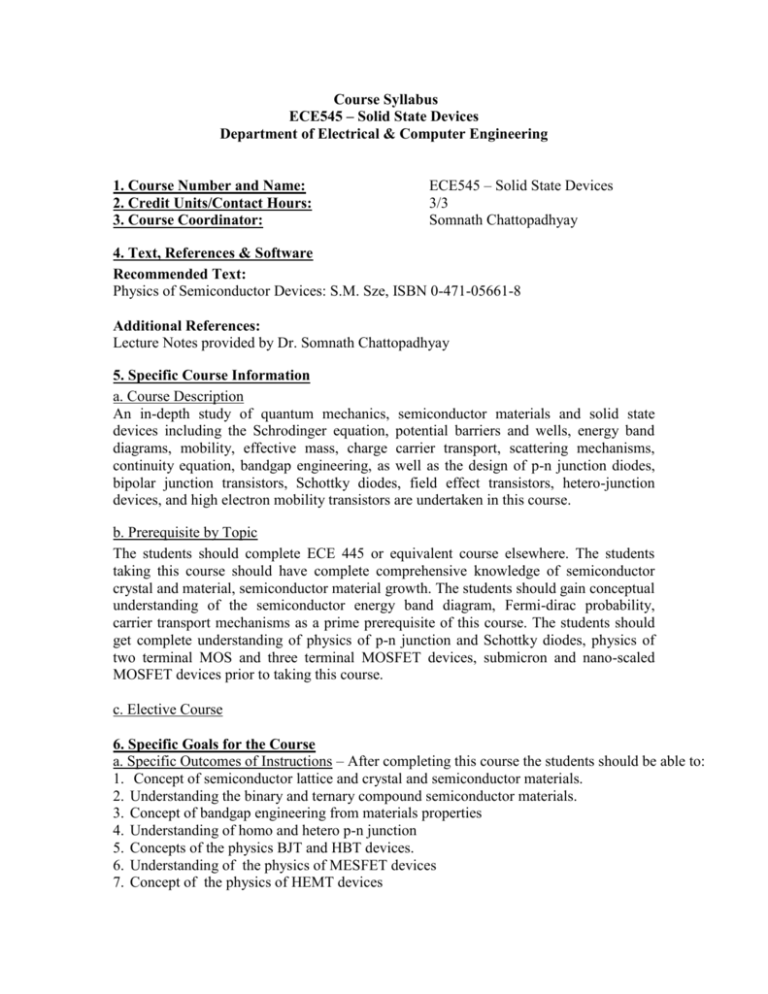
Course Syllabus ECE545 – Solid State Devices Department of Electrical & Computer Engineering 1. Course Number and Name: 2. Credit Units/Contact Hours: 3. Course Coordinator: ECE545 – Solid State Devices 3/3 Somnath Chattopadhyay 4. Text, References & Software Recommended Text: Physics of Semiconductor Devices: S.M. Sze, ISBN 0-471-05661-8 Additional References: Lecture Notes provided by Dr. Somnath Chattopadhyay 5. Specific Course Information a. Course Description An in-depth study of quantum mechanics, semiconductor materials and solid state devices including the Schrodinger equation, potential barriers and wells, energy band diagrams, mobility, effective mass, charge carrier transport, scattering mechanisms, continuity equation, bandgap engineering, as well as the design of p-n junction diodes, bipolar junction transistors, Schottky diodes, field effect transistors, hetero-junction devices, and high electron mobility transistors are undertaken in this course. b. Prerequisite by Topic The students should complete ECE 445 or equivalent course elsewhere. The students taking this course should have complete comprehensive knowledge of semiconductor crystal and material, semiconductor material growth. The students should gain conceptual understanding of the semiconductor energy band diagram, Fermi-dirac probability, carrier transport mechanisms as a prime prerequisite of this course. The students should get complete understanding of physics of p-n junction and Schottky diodes, physics of two terminal MOS and three terminal MOSFET devices, submicron and nano-scaled MOSFET devices prior to taking this course. c. Elective Course 6. Specific Goals for the Course a. Specific Outcomes of Instructions – After completing this course the students should be able to: 1. Concept of semiconductor lattice and crystal and semiconductor materials. 2. Understanding the binary and ternary compound semiconductor materials. 3. Concept of bandgap engineering from materials properties 4. Understanding of homo and hetero p-n junction 5. Concepts of the physics BJT and HBT devices. 6. Understanding of the physics of MESFET devices 7. Concept of the physics of HEMT devices 8. Understanding the application of HBT, MESFET and HEMT b. Relationship to Student Outcomes This supports the achievement of the following student outcomes: a. An ability to apply knowledge of math, science, and engineering to the analysis of electrical and computer engineering problems. b. An ability to analyze and interpret experimental data, demonstrated by the use of appropriate mathematics, graphics, and/or numerical methods. e. An ability to identify, formulate, and solve electrical and computer engineering problems. i. A recognition of the need for and an ability to engage in life-long learning. k. An ability to use modern engineering techniques for analysis and design. l. Knowledge of probability and statistics. n. Knowledge of math including differential equations, linear algebra, complex variables and discrete math. 7. Topics Covered/Course Outline 1. 2. 3. 4. 5. 6. 7. Crystal Lattices and semiconductor Material Bandgap Engineering and Material properties Binary and Ternary compounds materials Homo- and hetero junction properties Physics of BJT and HBT devices Physics of MESFET devices Physics of HEMT devices Prepared by: Somnath Chattopadhyay, Professor of Electrical and Computer Engineering, November 2011 Ali Amini, Professor of Electrical and Computer Engineering, March 2013
